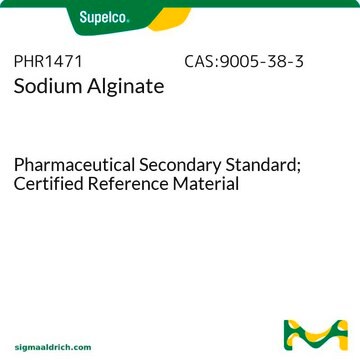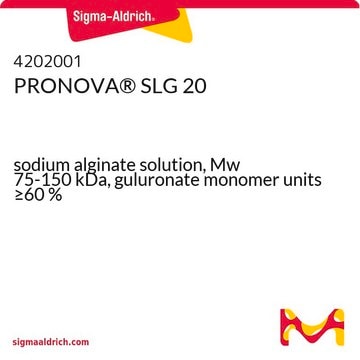918652
Low endotoxin alginate solution
Medium viscosity, 0.2 μm, sterile-filtered
Synonyme(s) :
Alginic acid, Sodium alginate
About This Item
Produits recommandés
Niveau de qualité
Stérilité
sterile-filtered
Forme
viscous liquid
Concentration
1.75-3.50 wt. % in DPBS (buffer)
Impuretés
<10 EU/g Endotoxin
<5 CFU/g Bioburden (Fungal)
<5 CFU/g Bioburden (Total Aerobic)
Couleur
colorless to pale yellow
Taille des particules
0.2 μm
pH
6.5-7.5
Température de stockage
2-8°C
Catégories apparentées
Application
Alginate is an anionic polysaccharide that is widely used in pharmaceutical and biomedical applications due to its non-animal origin, low toxicity, biocompatibility, and biodegradability. Alginate hydrogels are commonly used to fabricate tissue engineering scaffolds, bioinks for 3D bioprinting, and nanocarriers for drug & gene delivery. Alginate is commonly crosslinked into a hydrogel via ionic-crosslinking with divalent cations (e.g., Ca2+).
Conditionnement
Code de la classe de stockage
12 - Non Combustible Liquids
Classe de danger pour l'eau (WGK)
WGK 2
Certificats d'analyse (COA)
Recherchez un Certificats d'analyse (COA) en saisissant le numéro de lot du produit. Les numéros de lot figurent sur l'étiquette du produit après les mots "Lot" ou "Batch".
Déjà en possession de ce produit ?
Retrouvez la documentation relative aux produits que vous avez récemment achetés dans la Bibliothèque de documents.
Notre équipe de scientifiques dispose d'une expérience dans tous les secteurs de la recherche, notamment en sciences de la vie, science des matériaux, synthèse chimique, chromatographie, analyse et dans de nombreux autres domaines..
Contacter notre Service technique





